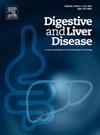意大利超紧急和宏观区域紧急肝移植的国家趋势(2019-2023):由CNT支持的注册表分析
IF 3.8
3区 医学
Q1 GASTROENTEROLOGY & HEPATOLOGY
引用次数: 0
摘要
背景和目标意大利通过两种快速途径管理危及生命的肝衰竭:超紧急上市(典型急性肝衰竭,24-48小时内国家优先考虑)和按宏观区域(北/南)紧急上市,用于法定适应症,如MELD >; 30,先前LT后的P1状态,或其他商定的“减损”病例。我们分析了最近的登记数据,以描述两种途径的活动、时间和结果,重点关注紧急宏观地区队列。方法回顾性分析scnt注册数据(2019-2023)。指标:列表,移植,平均等待时间(MWT),退出,死亡率和临床改善。次级分析比较了北方与南方宏观领域,并编纂了与“在克罗加”的紧急迹象。结果2019年至2023年,超紧急路径下的肝移植数量从177例下降到78例。2023年,全国超紧急病例的等待时间中位数(MWT)为1.8天,区域差异很大:北部地区为1.5天,南部地区为2.1天。2023年,超急症患者的总体辍学率为12%。重点关注2023年的紧急宏观区域途径,共有321例患者入选,比2022年增加41%,进行了235例移植(73%)。该案例组合包括214个已编纂的房源(91%)和21个被归类为“in-deroga”的房源(9%)。在编码的病例中,84%的MELD-Na评分≥30 (n = 180),而16%的患者优先进行再移植(Re-LT P1, n = 34)。2022年和2023年结果指标的比较显示,等待时间在恶化,最长等待时间从5.3天增加到7.1天。然而,辍学率和死亡率略有改善:辍学率从17.1% (n = 39)下降到14.5% (n = 34),等待名单上的死亡率从11.0% (n = 20)下降到7.0% (n = 17)。值得注意的是,因临床改善而被除名的患者从21人增加到41人,几乎增加了一倍。2023年,北部和南部地区在紧急病例方面存在明显差异。北方中心进行了166例移植,而南方为66例,而南方的中位等待时间(9.2天)明显长于北方(5.1天),这加剧了在获取和结果方面持续存在的区域差距。在2019年至2023年期间,意大利保持了对超级紧急候选人的快速准入,但活动有所下降,持续存在适度的辍学率。紧急宏观区域列表显著增长,以高meld患者为主。虽然国家表现仍然良好,但MWT的南北差异(≈4天)表明存在残余的组织不平衡。最近CNT的政策缩短了从宏观领域到国家优先级的升级,以及“在克罗加”请求的低比例,这表明朝着更统一、数据驱动的分配方向取得了进展。需要持续监测和有针对性地支持较慢的中心,以巩固公平并进一步减少等候名单上的损失。本文章由计算机程序翻译,如有差异,请以英文原文为准。
National Trends in Super-Urgent and Macro-Area Urgent Liver Transplantation in Italy (2019-2023): A Registry Analysis Supported by the CNT
Background and Aims
Italy manages life-threatening liver failure through two fast-track pathways: super-urgent listing (classical acute liver failure, national priority within 24–48 h) and urgent listing by macro-area (North/South) for codified indications such as MELD > 30, P1 status after previous LT, or other agreed “in-deroga” cases. We analysed recent registry data to describe activity, timing and outcomes of both pathways, with a focus on the urgent-macro-area cohort.
Methods
CNT registry data (2019-2023) were retrospectively reviewed. Indicators: listings, transplants, mean waiting time (MWT), drop-out, mortality and clinical improvement. Sub-analyses compared North vs South macro-areas and codified vs “in-deroga” urgent indications.
Results
Between 2019 and 2023, the number of LT performed under the super-urgent pathway declined from 177 to 78. In 2023, the national median waiting time (MWT) for super-urgent cases was 1.8 days, with significant regional variation: 1.5 days in northern regions versus 2.1 days in the south. The overall dropout rate for super-urgent patients in 2023 was 12%. Focusing on the urgent macro-area pathway in 2023, a total of 321 patients were listed, representing a 41% increase compared to 2022, with 235 transplants performed (73%). The case-mix included 214 codified listings (91%) and 21 listings classified as “in-deroga” (9%). Among codified cases, 84% had a MELD-Na score ≥30 (n = 180), while 16% were prioritized re-transplants (Re-LT P1, n = 34).Comparison of outcome indicators between 2022 and 2023 showed a worsening in waiting times, with the MWT increasing from 5.3 to 7.1 days. However, dropout and mortality rates improved slightly: dropout decreased from 17.1% (n = 39) to 14.5% (n = 34), and mortality on the waiting list dropped from 11.0% (n = 20) to 7.0% (n = 17). Notably, the number of patients removed from the list due to clinical improvement nearly doubled, from 21 to 41.Marked disparities were observed in 2023 between northern and southern regions in urgent cases. Northern centers performed 166 transplants compared to 66 in the south, while the median waiting time was significantly longer in the south (9.2 days) than in the north (5.1 days), reinforcing the persistent regional gap in access and outcomes.
Conclusions
Between 2019 and 2023 Italy maintained rapid access for super-urgent candidates, yet activity declined and a modest drop-out persisted. Urgent macro-area listings grew markedly, dominated by high-MELD patients. While national performance remains good, the North–South difference in MWT (≈4 days) signals residual organisational imbalance. Recent CNT policies that shorten escalation from macro-area to national priority—and the low proportion of “in-deroga” requests—suggest progress toward more uniform, data-driven allocation. Continuous monitoring and targeted support to slower centres are required to consolidate equity and further reduce wait-list losses.
求助全文
通过发布文献求助,成功后即可免费获取论文全文。
去求助
来源期刊

Digestive and Liver Disease
医学-胃肠肝病学
CiteScore
6.10
自引率
2.20%
发文量
632
审稿时长
19 days
期刊介绍:
Digestive and Liver Disease is an international journal of Gastroenterology and Hepatology. It is the official journal of Italian Association for the Study of the Liver (AISF); Italian Association for the Study of the Pancreas (AISP); Italian Association for Digestive Endoscopy (SIED); Italian Association for Hospital Gastroenterologists and Digestive Endoscopists (AIGO); Italian Society of Gastroenterology (SIGE); Italian Society of Pediatric Gastroenterology and Hepatology (SIGENP) and Italian Group for the Study of Inflammatory Bowel Disease (IG-IBD).
Digestive and Liver Disease publishes papers on basic and clinical research in the field of gastroenterology and hepatology.
Contributions consist of:
Original Papers
Correspondence to the Editor
Editorials, Reviews and Special Articles
Progress Reports
Image of the Month
Congress Proceedings
Symposia and Mini-symposia.
 求助内容:
求助内容: 应助结果提醒方式:
应助结果提醒方式:


